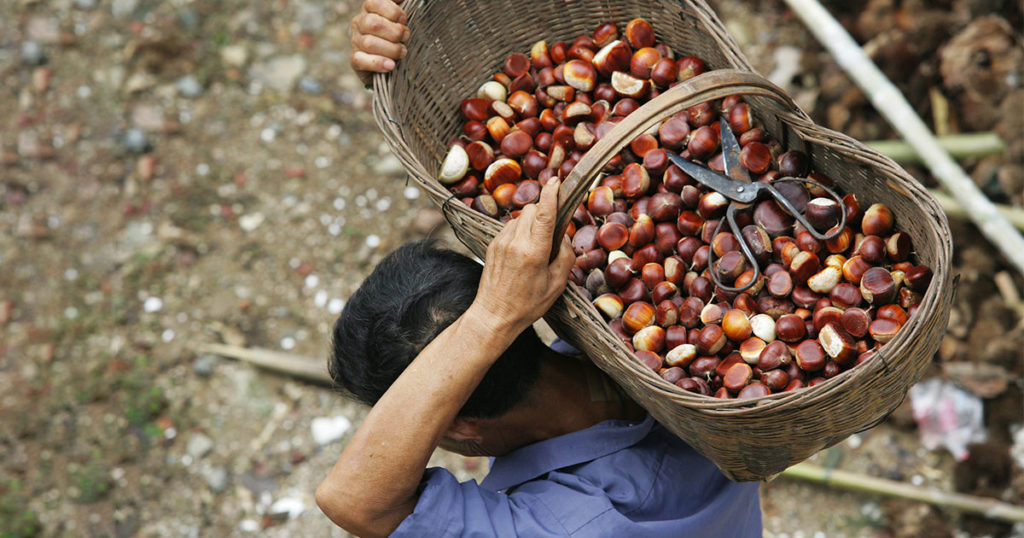
“Hickory Wind” is a 1960s Gram Parsons song that I know from my childhood, when I listened to Joan Baez’s rendition. Bob Buchanan, a former bandmate of Parsons’s, contributed to the writing, but how much, exactly, is debated, as is the claim of authorship by Sylvia Sammons, a blind folk singer, made nearly 40 years after the song was first recorded. I came across these inconclusive discussions on the Internet, where I was looking for an explanation of what a hickory wind is. I did not find an answer, only guesses. One is that it’s a breeze carrying the smell of burning hickory wood, which is prized for smoking meats. Another is that it’s a wind with the scent of hickory flowers. Commenters rejected both of these possibilities. Might it be, I wondered, a warm wind that ripens the hickory nuts? Such a warm fall wind in Asturias is called a chestnut wind, as my neighbor told me one day in late October when the sun was shining and the temperature was mild, and the branches on the trees across the lane were waving in the gusty day. They call this a chestnut wind, he said, because the warm air opens the husks and the gusts knock the nuts, still in their husks, from their branches.
“Ah,” I said, adding that I’d seen scores of people out with bags gathering chestnuts along the river trail.
In the hills too, he said. He didn’t go himself, though, not being fond of chestnuts.
“No?”
He cocked his head. It wasn’t that he didn’t like the flavor, he admitted, so perhaps it was all the chestnuts he’d eaten as a child and youth. Chestnuts, he reminded me, were once a staple in Asturias.
It’s true. Even more appreciated than hazelnuts, which ripen in late August and September, or walnuts, gathered in September and October, are chestnuts. In late fall, forest floors as well as country lanes are covered with the bright green of newly fallen erizos, as the prickly husks are called for their resemblance to sea urchins or hedgehogs, both also called erizos. You can’t handle the husks without gloves, but a practiced press and drag with a shoe will free the three nuts clustered within, which you can pick up. After a warm wind, a chestnut wind, people by the dozens gather the nuts along trails and lanes. At stands in local markets, you can buy chestnuts by the kilo, and street vendors roast them on the street and sell them hot, wrapped up in newspaper. Schoolchildren celebrate the fall harvest, magüestu, with roasted chestnuts and apple cider. Hazelnuts are a crunchy treat either raw or toasted, walnuts are eaten straight or ground up to make cakes, but chestnuts—so many ways to eat them. During the late fall, a week is unofficially designated as chestnut week, and savory chestnut stews with sausage are served in many bars and restaurants. Chestnuts are also candied or canned in syrup. Once peeled, chestnuts will soften and become sweet, as the carbohydrates turn to sugar. They are a delicious snack like this. Spread to dry, they become as hard as rocks and keep from one year to the next. Suck on one like hard candy, and it will last an hour. Soak them in water and then chew them like gum. Or, fresh or dried, boil them up to mash with milk and sugar for a nutritious kind of porridge, hot and sweet and filling, good for the deepest winter evening, when you might think back as Parsons did on a time before troubles were real.


